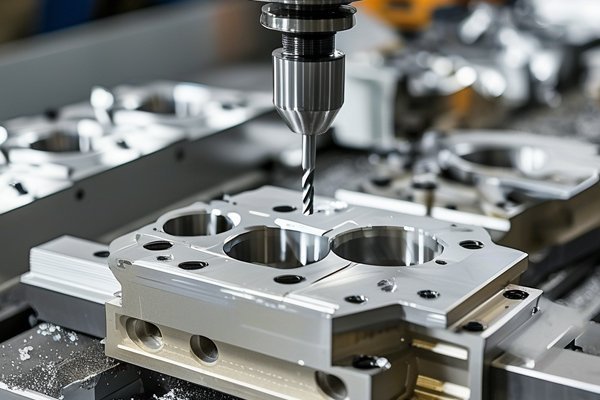In today’s fast-paced manufacturing landscape, precision is more than just a goal—it’s imperative. In the realm of CNC (Computer Numerical Control) machining, accuracy in cutting steel and aluminum has profound implications on product quality, efficiency, and cost-effectiveness. At YL Machining, we are dedicated to pushing the boundaries of what is possible in CNC technology. Our commitment to innovation allows us to not only meet but exceed the expectations of our clients.
In this comprehensive guide, we will delve into the various aspects influencing cutting accuracy in CNC machining of steel and aluminum, offering detailed insights, useful strategies, and advanced techniques that can elevate your production quality. Whether you are an industry veteran or new to the CNC world, this knowledge-rich article aims to equip you with the essential tools to enhance your machining processes.
Understanding CNC Machining
Before we embark on techniques and strategies for improving cutting accuracy, let’s establish a foundational understanding of CNC machining. CNC machining refers to the automated control of machine tools through computer programming. This method provides precision in manufacturing operations like drilling, milling, and turning.
Key Components of CNC Machining:
The Importance of Cutting Accuracy
Cutting accuracy is vital for multiple reasons:
Factors Affecting Cutting Accuracy
To enhance cutting accuracy, it’s essential to understand the various factors that can influence it. Below, we discuss these factors in detail.
Proper calibration of CNC machines is crucial. This process involves aligning the machine’s axes to ensure that the cutting tool moves correctly according to the program’s specifications.
The choice of cutting tool dramatically affects accuracy.
Optimizing cutting parameters like speed, feed rate, and depth of cut can significantly enhance cutting accuracy.
As tools wear, their effectiveness diminishes, leading to inaccuracies.

Securely and accurately setting up the workpiece avoids movement during machining, which can lead to inaccuracy.
Environmental conditions, including temperature, humidity, and vibrations, can influence cutting processes.
Advanced Techniques for Enhancing Cutting Accuracy
Beyond understanding fundamental factors, employing advanced techniques can push your CNC machining capabilities further.
Adaptive machining leverages real-time data to adjust machine parameters. By incorporating sensors, CNC machines can self-correct and adapt to changing conditions, maintaining precision.
HPM entails aggressive cutting operations that yield high reliability and productivity, especially useful in tough materials like steel.
Utilizing advanced Computer-Aided Manufacturing (CAM) software can enhance programming efficiency.
Regularly employing quality control systems like Statistical Process Control (SPC) can track performance, and identify deviations early.
The Role of Technology in CNC Machining
The CNC machining landscape is continuously evolving, with new technologies playing a vital role in improving cutting accuracy.
The Internet of Things (IoT) plays a significant role in modern CNC machining. By connecting machines and systems, manufacturers can monitor performance, predict tool wear, and make data-driven decisions.
AI has the potential to revolutionize CNC machining by analyzing vast amounts of data and suggesting optimal cutting parameters, facilitating continuous improvement.
Machine learning algorithms can predict outcomes based on historical data, enabling proactive maintenance plans and continuous process improvements.
At YL Machining, we believe that the journey towards cutting accuracy in CNC machining of steel and aluminum is a continuous one. With a comprehensive understanding of the factors at play, advancements in technology, and optimal practices, we can enhance parameters that contribute to precision.
Investing time and resources into refining your machining processes will not only enhance your product quality but also save costs and increase your competitive advantage. As we step into a future driven by technology and innovation, let’s harness the power of cutting-edge solutions to elevate our industry to new heights.
Call to Action
Ready to improve your CNC machining processes? Connect with YL Machining today! Our experts are equipped to provide tailored solutions to meet your specific machining needs. Let’s take the journey to precision together.






